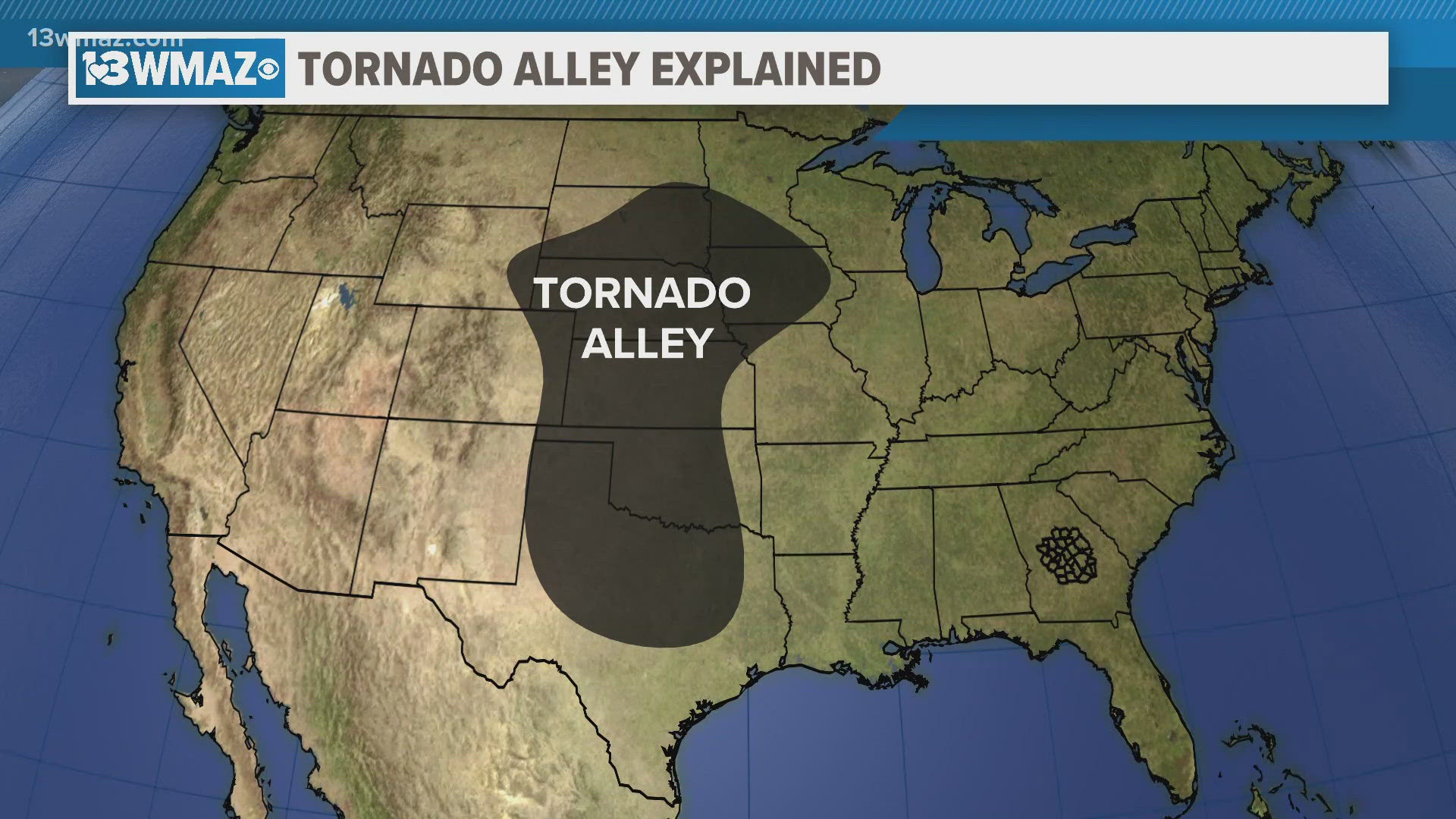MACON, Ga. — Over the past week, over 120 confirmed tornadoes have ravaged the Midwest and Great Plains.
The outbreak was strongest in states like Nebraska, Kansas and Oklahoma, which bore the brunt of the devastation. The strongest tornado was an EF-4 that struck Sulphur, Oklahoma, Saturday night.
This outbreak occurred in an area known as "Tornado Alley."
That's not an official scientific designation, but it describes the region with the most tornadoes yearly. Generally, it covers the northern, central and southern plains.

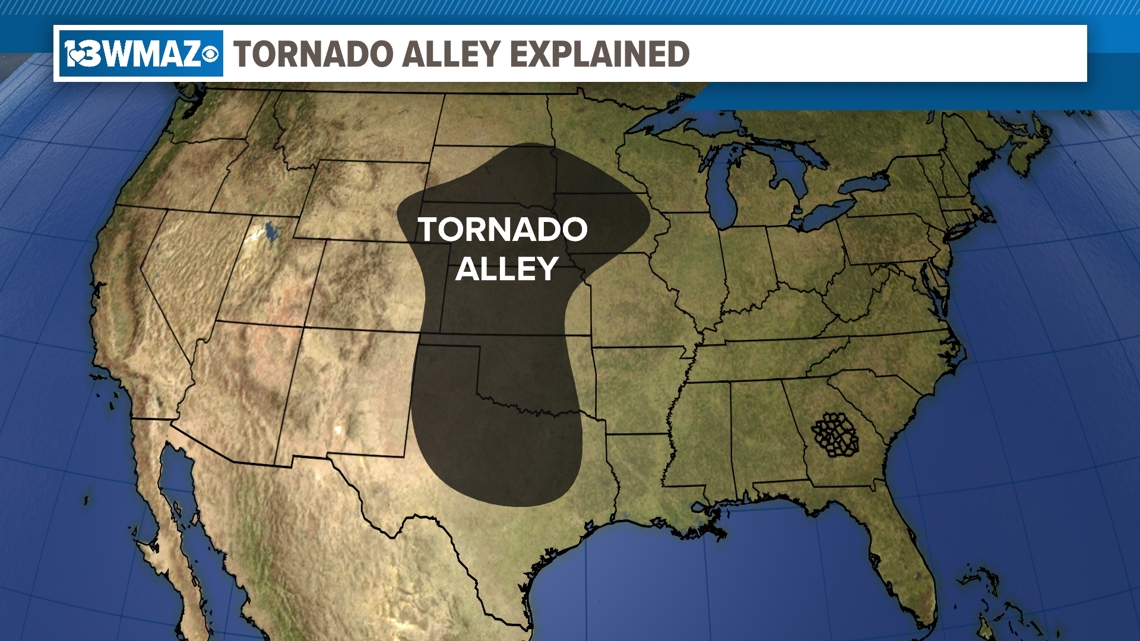
This region is prone to tornadoes due to a boundary known as the "dry line." That's the line that separates the dry, desert air from the warm, moist air coming from the Gulf of Mexico.

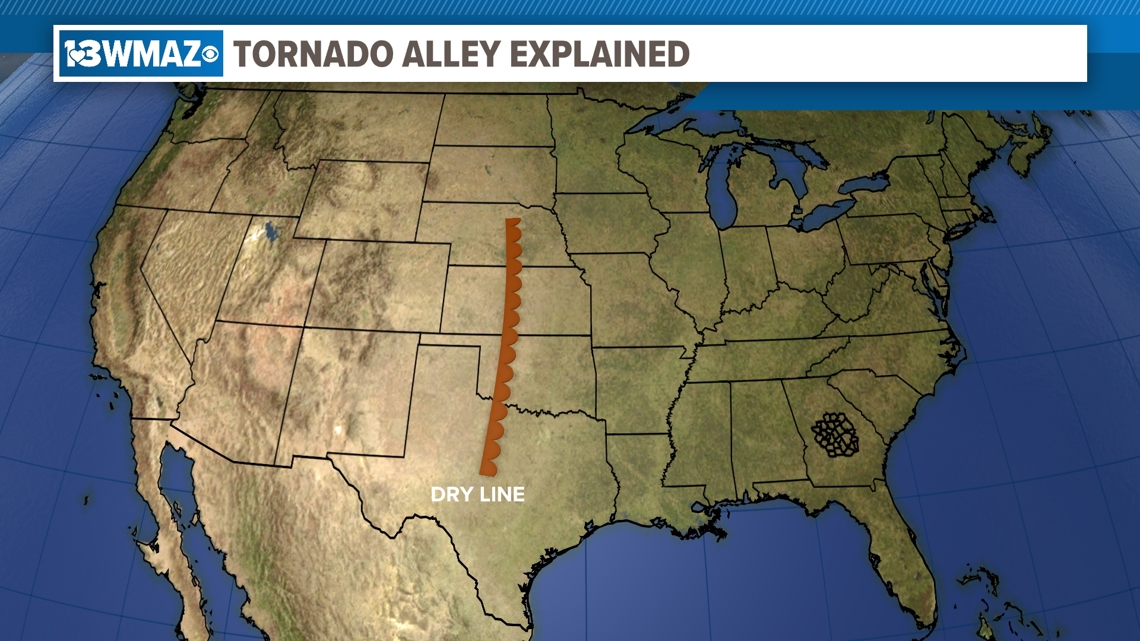
The two air masses interact to create favorable conditions for severe thunderstorms.

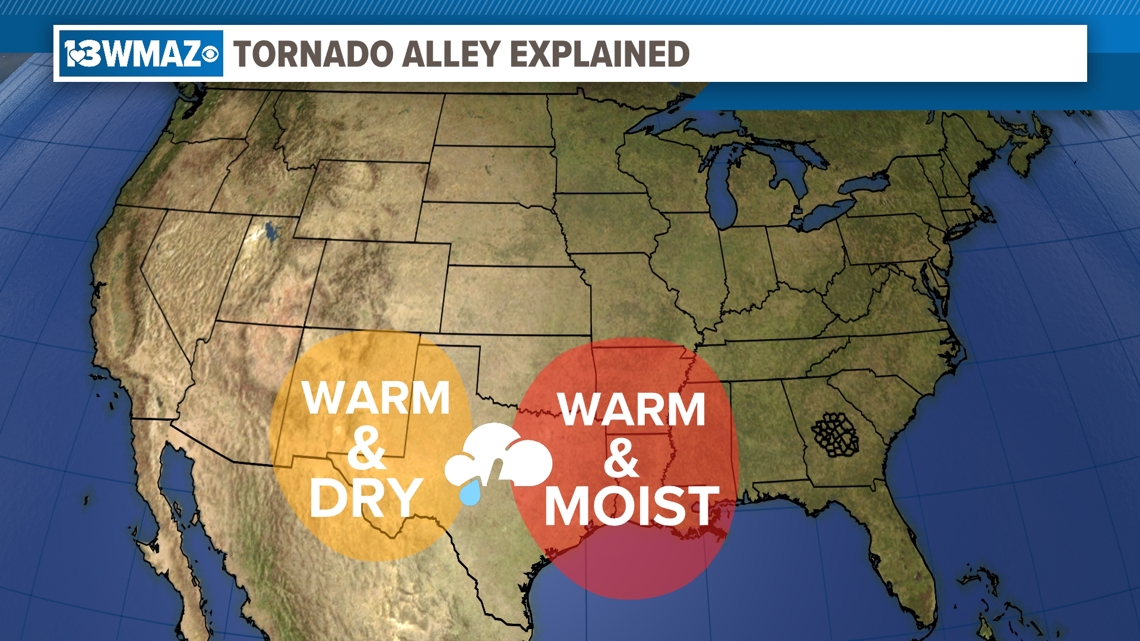
When cold, dry air from the Rockies is added to the mix, that combination sets up a perfect recipe for tornado development.

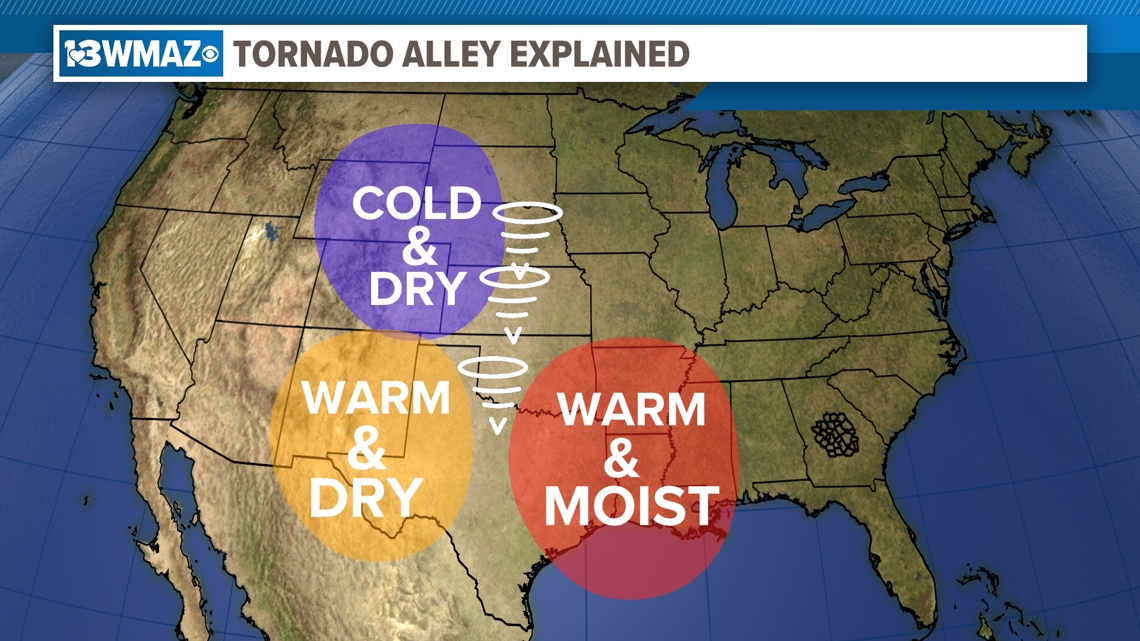
Over the past decades, the number of tornadoes in the Great Plains has gradually decreased, while tornadoes have become more common in the Southeast.
Some researchers believe that Tornado Alley is moving east due to persistent drought in the Great Plains, which extends drier air eastward.
However, there is currently no definite answer to the shift, as more research is needed.
We have more about how to stay weather aware. With spring here, you can find out more in our Weathering the Seasons severe weather special. You can watch that by downloading our 13WMAZ+ app on our Roku and Amazon Fire Stick devices. You can also watch that on YouTube here.

